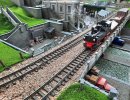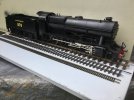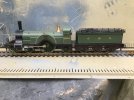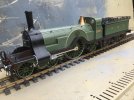Certainly if you model IOM cars at a scale of 15mm to the foot on 45mm track they will look just fine next to LGB, Bachmann and Occre kits. I reckon that IOM bogie cars, particularly the so called winter cars should be an easy build being somewhat square in section. Power by USA a Locomotive Bogie would be a fine option for battery control. Trailers may be a bit trickier being I think mostly more rotund and of course cross bench. However cheeply sourced non working Bachmann Cross Bench and Enclosed Cars could be nicely hacked to make IoM Bogie Trailers.Rik,
Up until 23rd December the idea of a garden railway was but just a dream for the future, until we found a new property my beloved and I could agree on.
My interest in the larger scales/gauges is very new and until two weeks ago was always intended to be 15mil scale based on the Manx Northern Railway. In January and then February I picked up two G gauge trams on flea bay.
My question was simply to understand what was meant by british G scale, is it a thread for people modelling G gauge in britain, is it a thread for people modelling british prototypes on G gauge, I was just trying to understand the thread title and if it could be one for me to add to the watch list.
Since joining this group I suspect my modelling path will be a tramway one rather than railway, my interest in british trams is limited with the exception of the Isle of Man, why I don't know but something about the island appeals, my other tramway interest lays mainly with the Ringhoffer trams which I discovered about 10 years ago.
So I am a predominantly a tramway modeller living in Scotland with a british interest for an island i haven't been to for about 35 years.
If you can un-scramble that lot can you please explain to me whether I am a british Gauge scale/gauge modellerI just plan to model things which appeal.
David
Link to the USA bogies, only 1 needed per car. Have not measured up how they would be for size but would be a good start.






